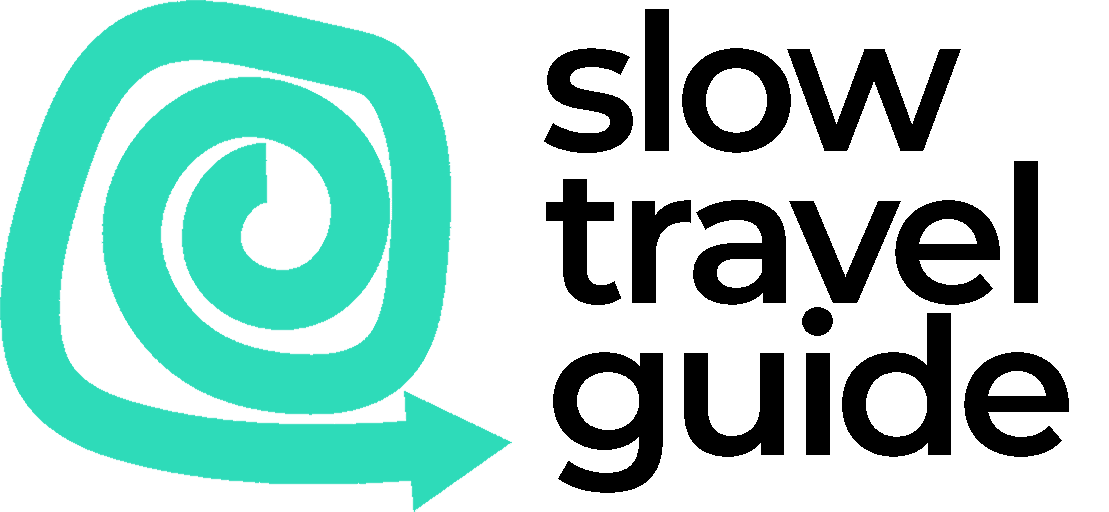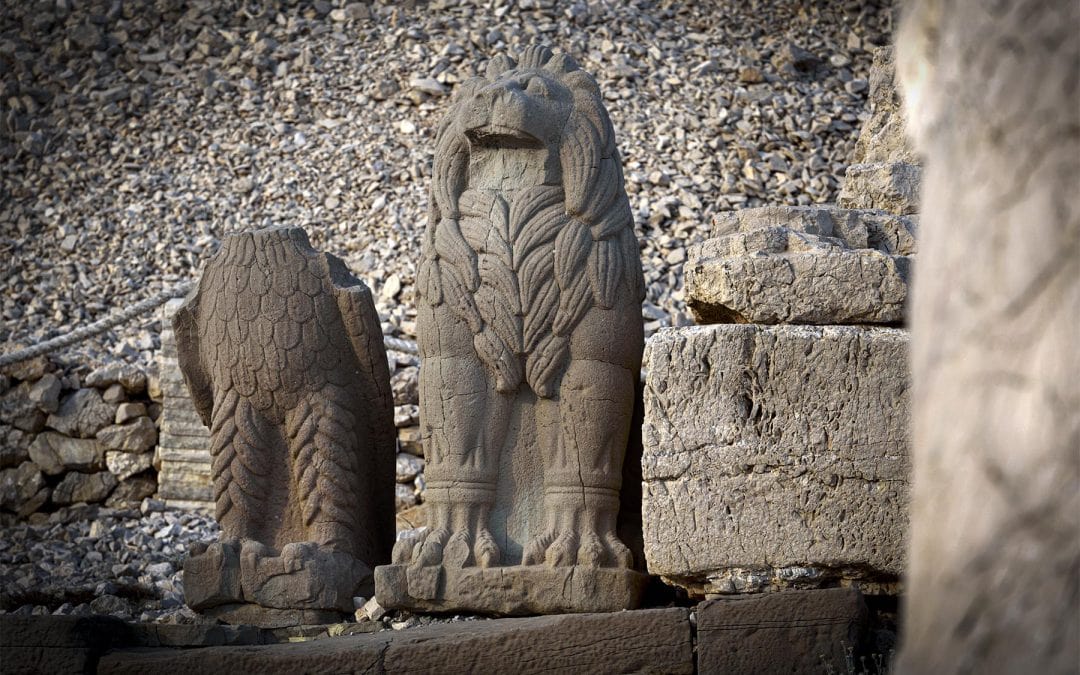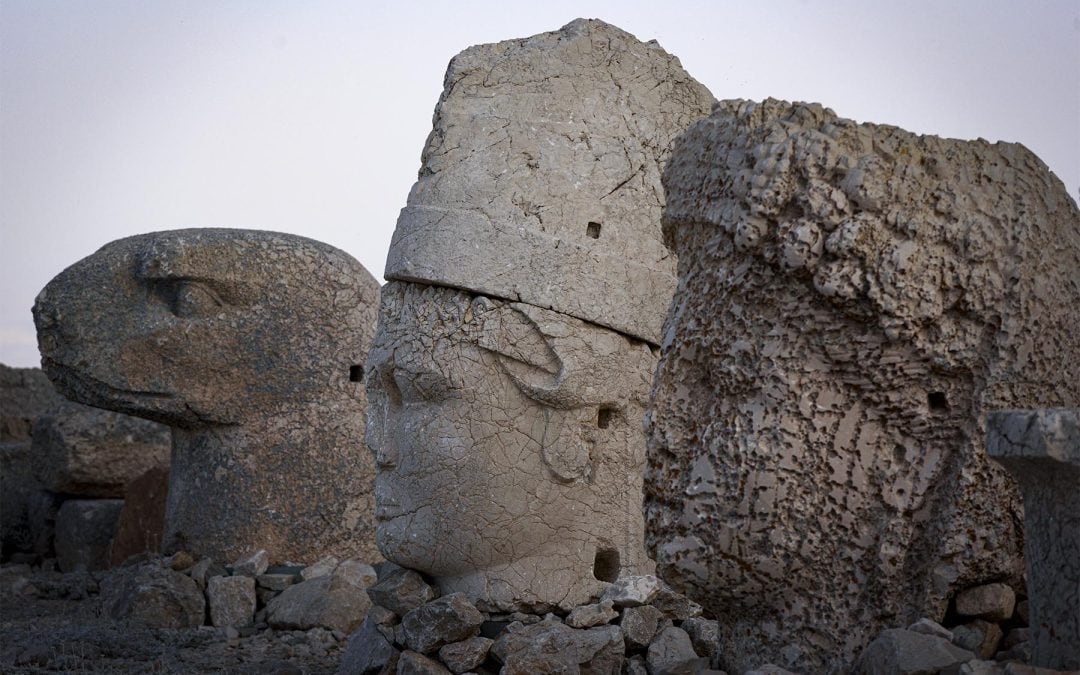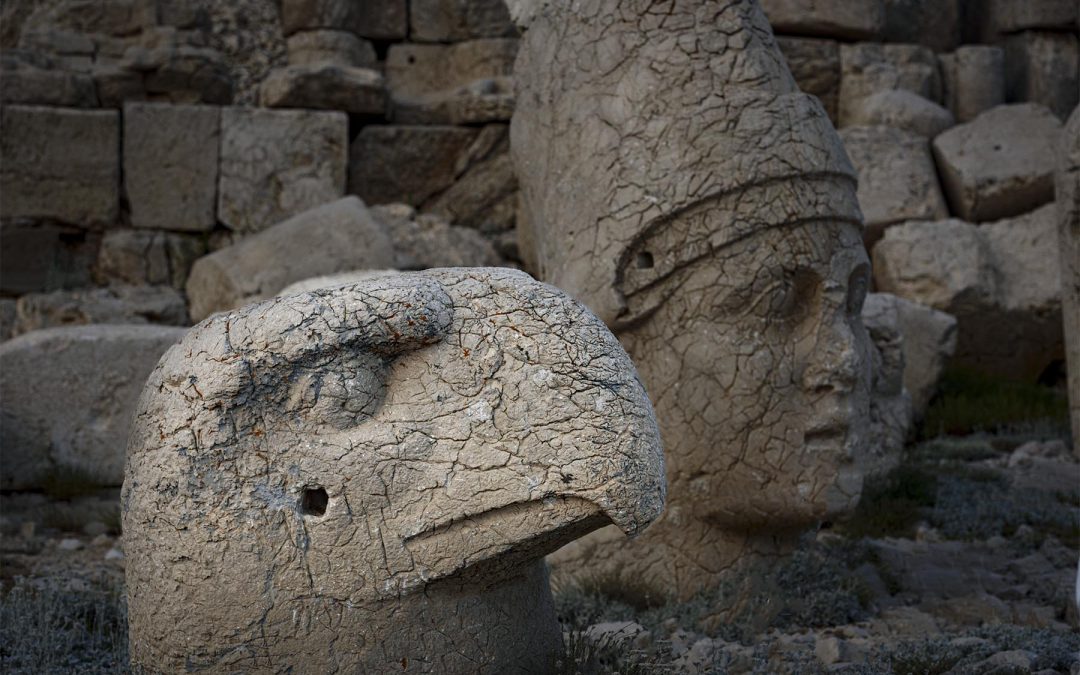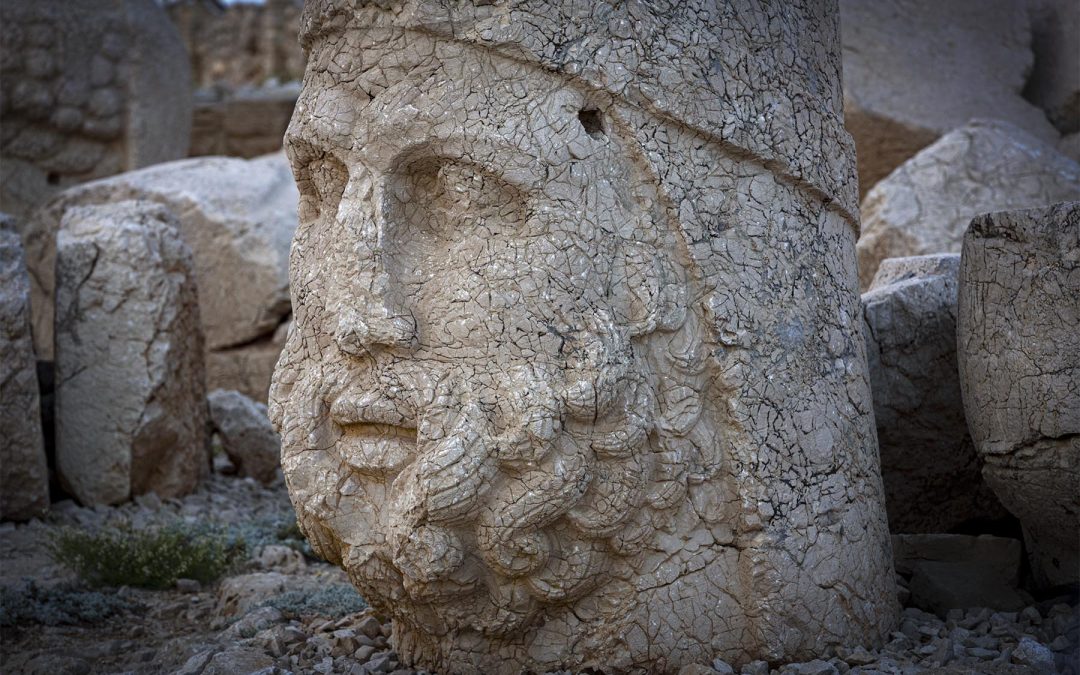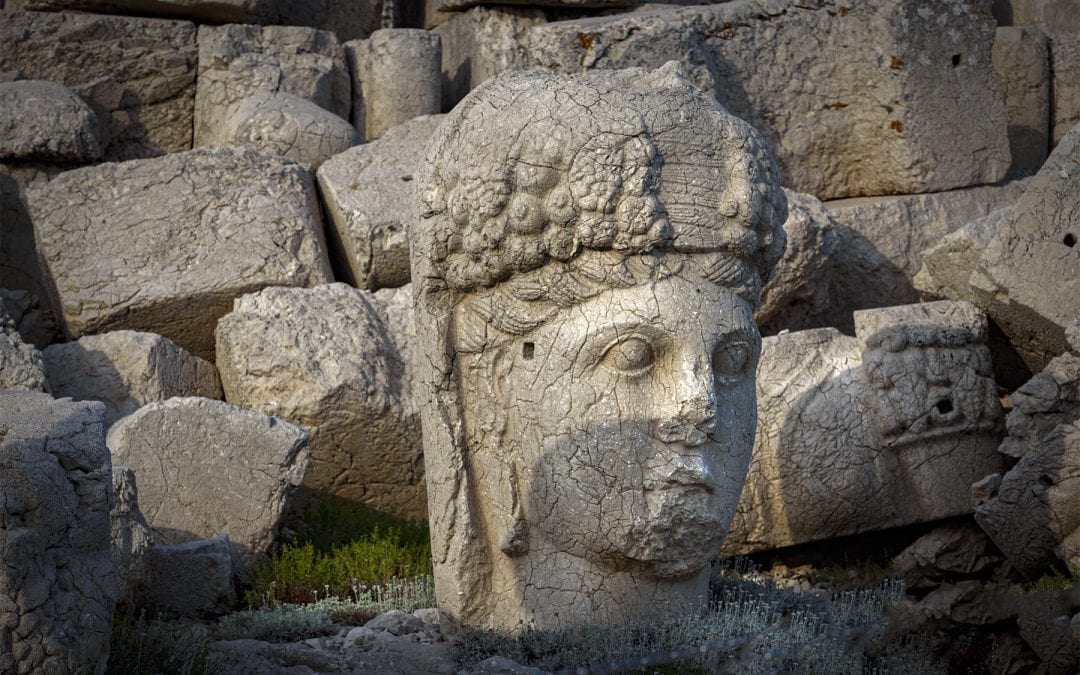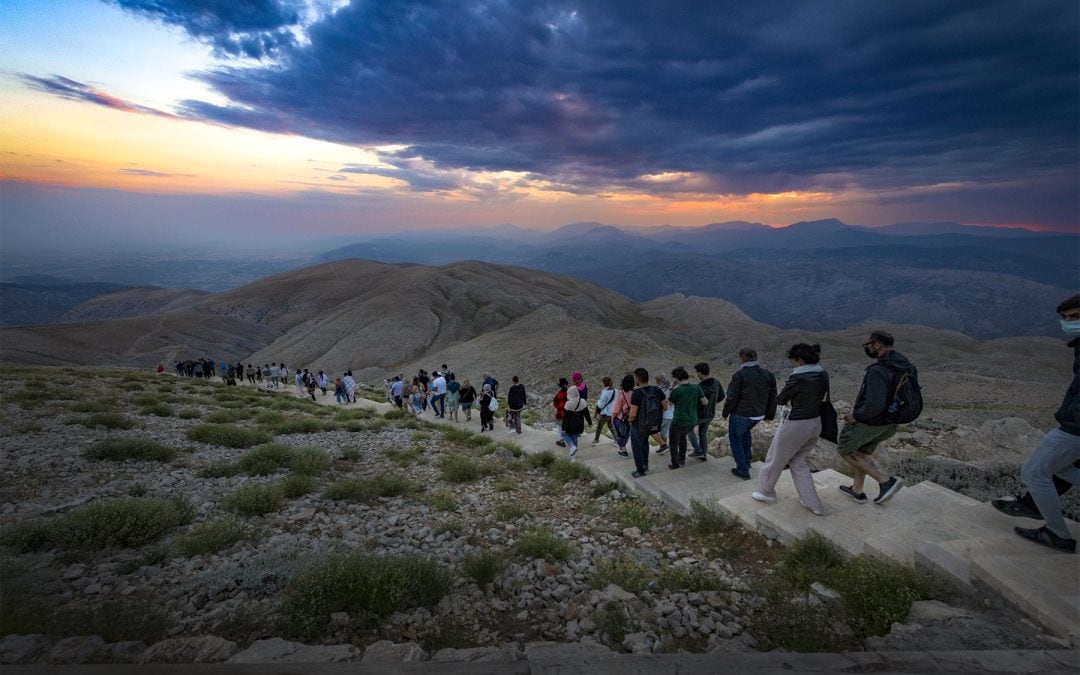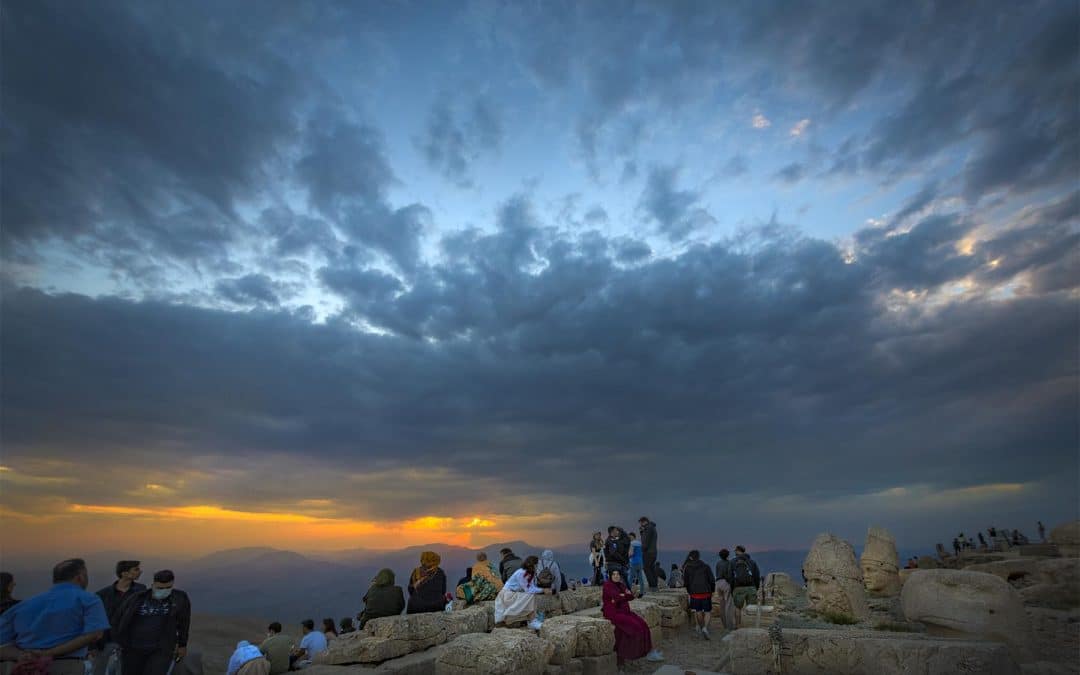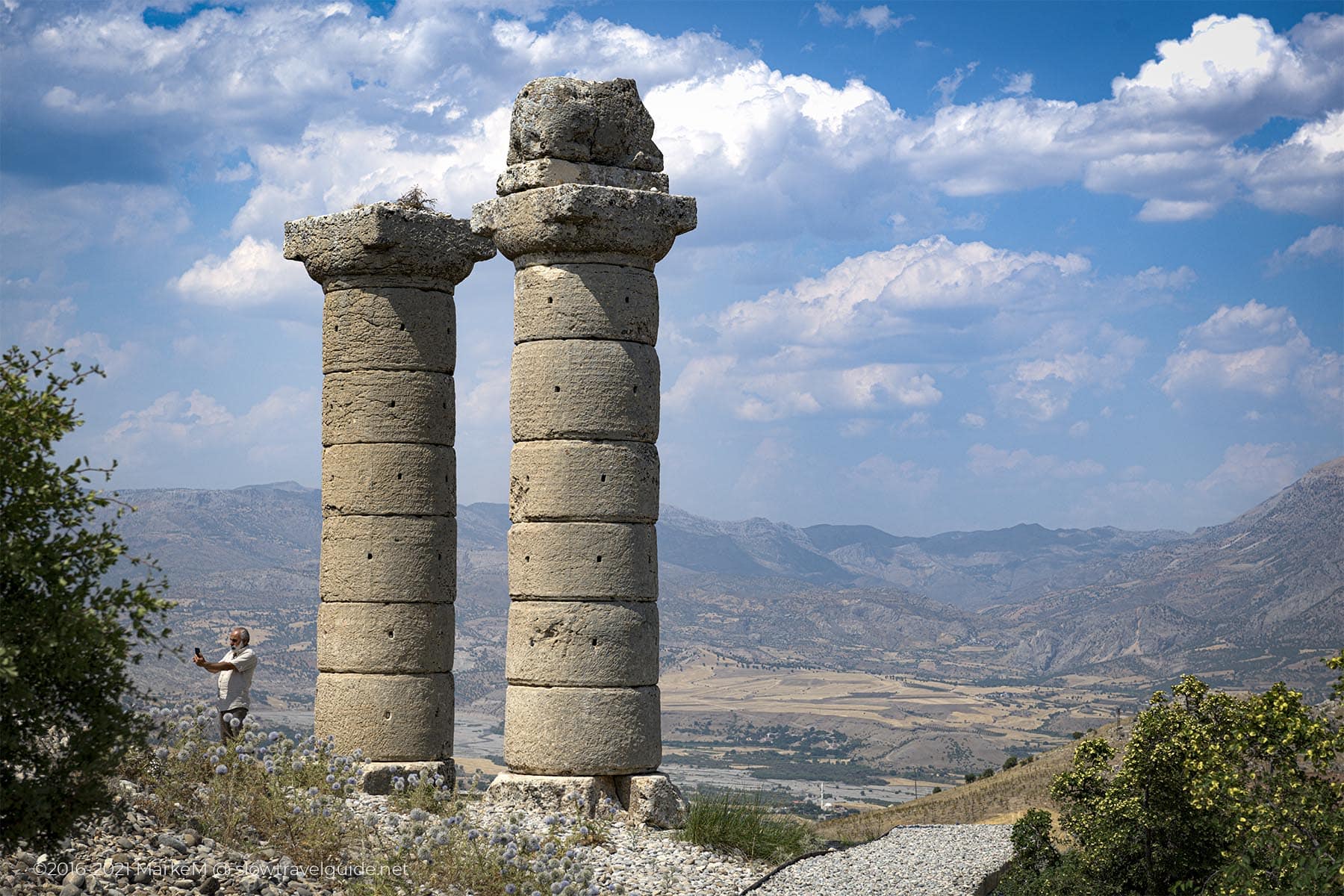Nemrut
An Iconic Place Becomes Instagram Hype
By Slowtravelguide
The Hierothesion on Mount Nemrut was constructed during King Antiochus I. Mount Nemrut is a central crossing point on the Upper Euphrates Valley. King Antiochus ruled during the most critical period of the Kommagen Kingdom.
The Kingdom spread from the Taurus Mountains in the North to Kahramanmaraş in the West. The Tumulus of Mount Nemrut is located in the town of Kahta in the Adıyaman Province.
Mount Nemrut
The Hierothesion sits on an area of about 26000m2. Three terraces are surrounding it, in the west, east and north. The highest point of the stimulus is 2206m. 2 paths lead to the tumulus, one from the Northeast and the other from the Southwest.
The tomb of Antiochus is situated in the region, but it is not found yet because there is a complex tunnel structure under Mount Nemrut; some tunnels have been obstructed and can not be entered. Some tunnels still have to be explored.
Seeking Eternity
Antiochus’s secrets contain information primarily about Christianity and the civilization of Agartha, and Antiochus wanted to be an immortal king who seeks eternity.
Mount Nemrut Tumulus was added to the UNESCO World Heritage List, reference number 448, by meeting criteria no. I, III and IV of the World Heritage Committee in 1987.
Who Is Who On Mount Nemrut?
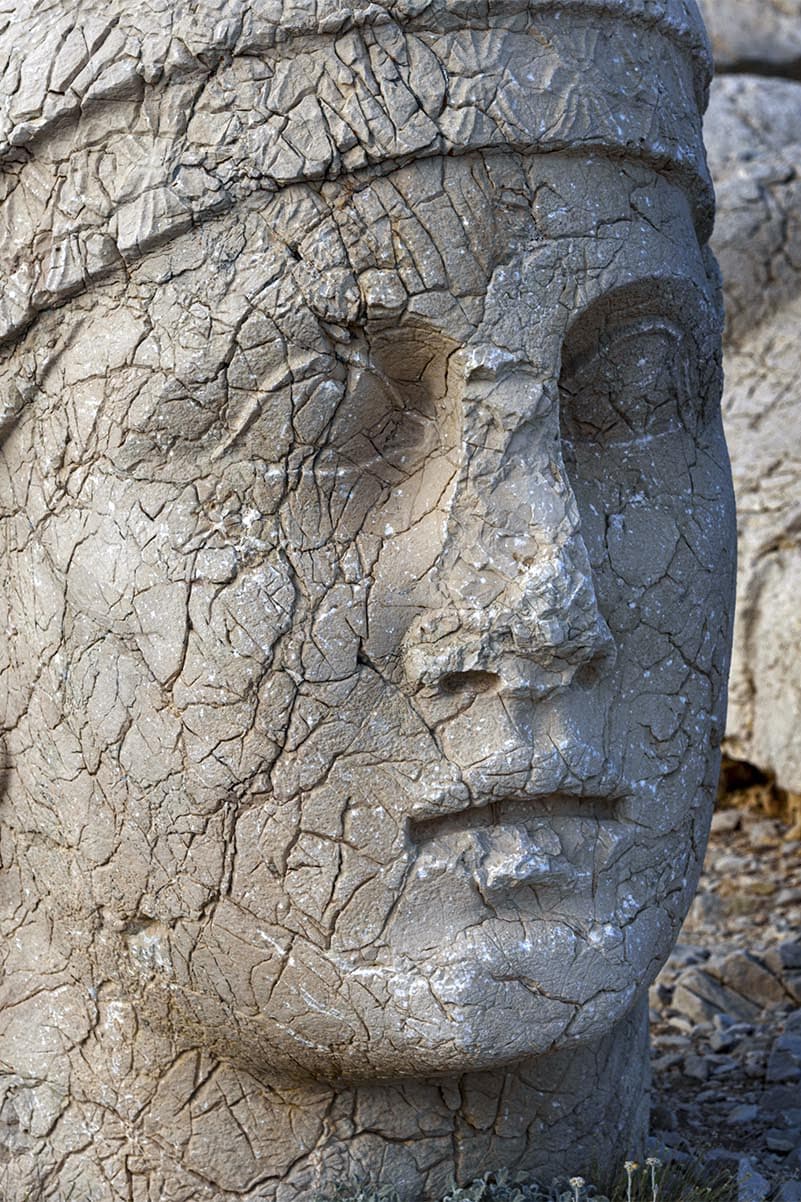
Antiochus
The statues located on the West terrace are slightly smaller than those found on the East Terrace but follow the same order. The first statue after the lion and eagle is Antiochus, although again, the statue’s head is no longer on the body but located separately on the terrace.
What is left of the body of the statue is three layers of stone blocks: the first layer represents the stool on which the feet stand, the second layer represents the feet, and finally, the third layer represents the calves. The other stone blocks that initially made up the body of the statue are scattered across the terrace
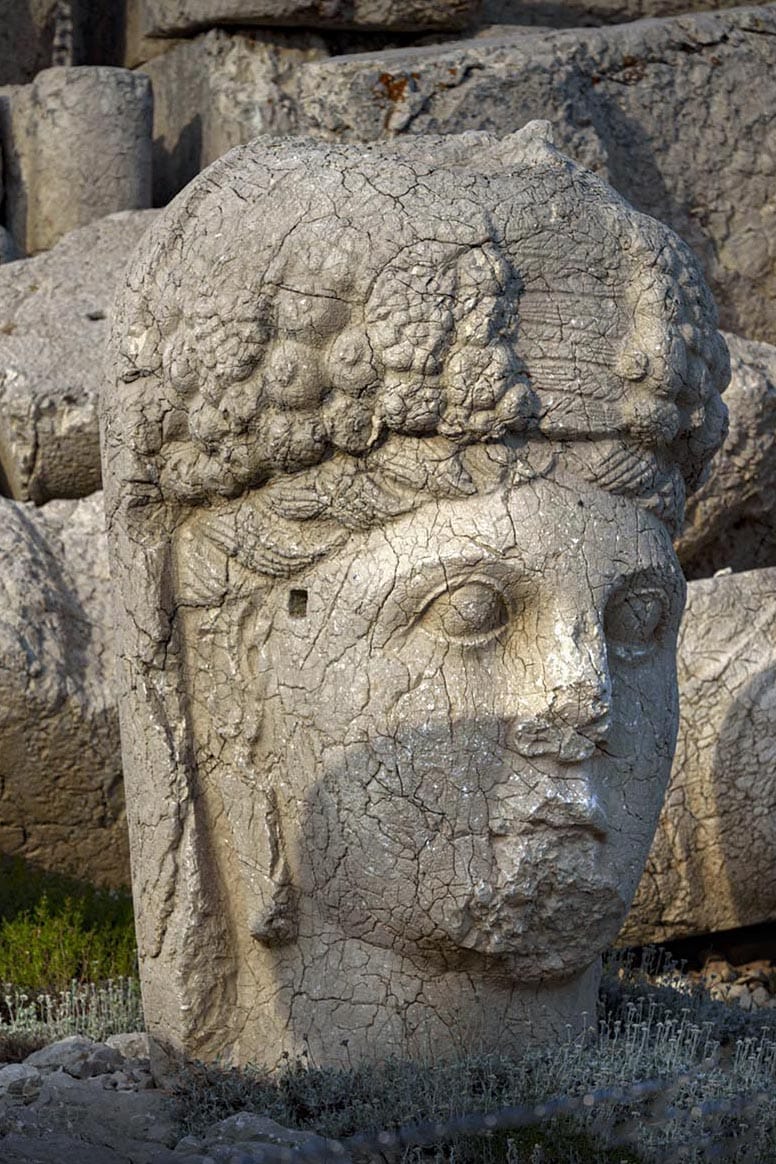
Commagene
Next to the statue of Antiochus is the Commagene goddess of fertility, although the top portion of the head has broken off, as well as the nose and chin. The clothing and accessories of the goddess mirror those on the statue on the East Terrace, and similar to the figure of Antiochus, only three layers of stone blocks composing the statue’s body are in their original location, with other blocks scattered around the bust.

Zeus
The highest-rank god is again located central to the row of statues and is larger than the others. He is depicted with a beard and moustache, although the top portion of his tiara (headwear) is no longer in its original place.
Zeus, after overthrowing his father Cronos, took over his leadership and is known as the god of the heavens and the rain.
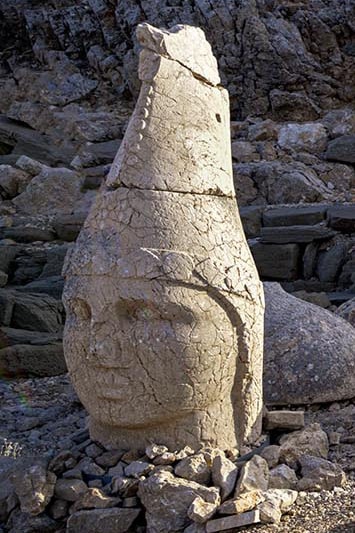
Apollo
Apollo: Apollo stands next to Zeus and is depicted with a bundle of weak branches in his left hand.
The left-hand side of the head of Apollo is well preserved, and the surface is intact, as it was found partially buried; however, the right-hand side has suffered wide cracks after years of exposure to the elements.
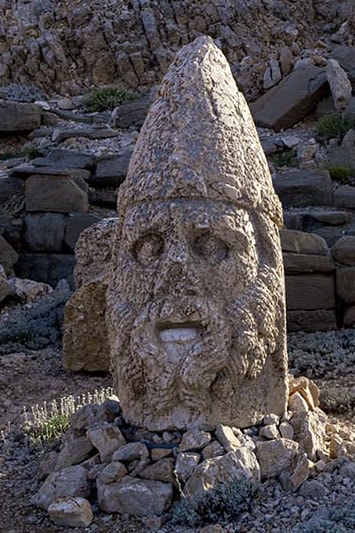
Herakles
Was the son of the god Zeus and mortal Alkmene and represented the unbeatable violent power and endurance of man before nature. All of his deeds are good, and he is beneficial to humanity as he destroys the disasters and calamities that nature inflicts upon men.
In the dexiosis (handshake- sanctification) reliefs, Herakles is usually depicted in the traditional Greek style, i.e. half-naked, bearded, with a laurel wreath in his head, wearing a lion skin and carrying a Keule in his hand. Here, however, he is depicted just like his Persian equivalent, Artagnes, in Persian costume and wearing a tiara, but still bearded and carrying a Keule.
Protective Animal Statues
The protective lion and eagle animal statues that share a base on the West terrace have deteriorated more than those on the East Terrace.
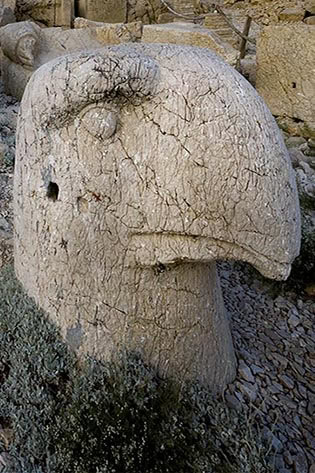
Eagle Statues
The eagle represents the domination of the Kingdom Of Commagene over the skies. Also, it is known that Zeus used an eagle to communicate orders to his men.
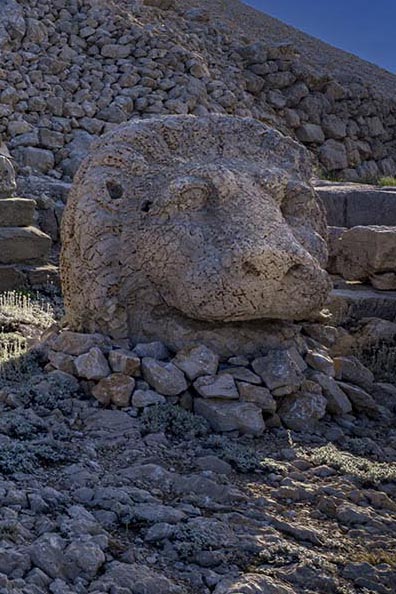
Lion Statues
The lion represents the domination of the Kingdom of Commagene over the earth.
The Headless Statues At The East Terrace
East Terrace
On the east terrace, there are five god statues facing away from the tumulus. They are flanked by guardian animals, lions and eagles. The gods are: Antiochus, Commagene/Tyche, Zeus/Oromasdes, Apollon/Mithras-Helios-Hermes and Herakles/ Artagnes-Ares.
Lion Statue And A Broken Tablet
Antiochus’ Will (Nomos)
At the back of the statues, which is identical on both terraces, is Antiochus’ will (nomos), inscribed in ancient Greek, where the gods are referred to with their Greek and Persian names. Apart from the statues, there are stelae plinths in front of the altars.
The inscription on the entrance where Antiochus built his tomb from that time is as follows:
” Here it is, as you can see. I have erected these statues that are truly worthy of the gods: the statues of Zeus, Apollo, Ares, and the figure of my homeland, Commagene, which feeds everything. I also made my sculpture made of the same stone and sitting on the same throne next to the gods who hear prayers, and don’t forget that if you, my brother, come here and pray to me, I will listen to you!”
West Terrace
The sculptures on the West terrace are the same as the sculptures on the East terrace, except for some details.
In the West terrace, there was a figure of a lion with a crescent on its neck, nineteen stars on its body, and three large stars on its upper part.
The walking Lion was standing on a block 2.5m wide by 2.5m high. It is believed that these three large stars symbolize the planets Mars, Jupiter and Venus. The lion figure, which was intact during the excavations in 1883, was destroyed over time.
The Eagle, Antiochus And Commagene (left to right)
Zeus And Herakles
Iconic Nemrut
Mount Nemrut was for years on our bucket list. We have always been impressed with this iconic place. The combination of a place, far from civilization, combined with an unworldly ancient site attracted us. But until now, we never had the opportunity to visit it.
Over the years, Nemrut’s growing fame forced the government to take extra measurements to protect the site. Visitors were no longer allowed to walk without restrictions between the statues or access certain parts of the site. Nemrut became the victim of its popularity. And on top of this, the selfie Instagram people came to Nemrut, and Mount Nemrut became even more popular.
What To Expect
How To Get There: Private car, rental car (check the map below) or with a local tour operator.
Nearest Airport: Adıyaman Airport.
Parking: Yes, at the foot of the summit.
Terrain: Easy but climbing (300 steps).
Stroller: No.
Income: Yes (Museum Pass is valid)
Facilities: Cafe-restaurant and souvenir shop near the parking lot.
Best Time To Visit: All year around but be aware of winter conditions on the mountain.
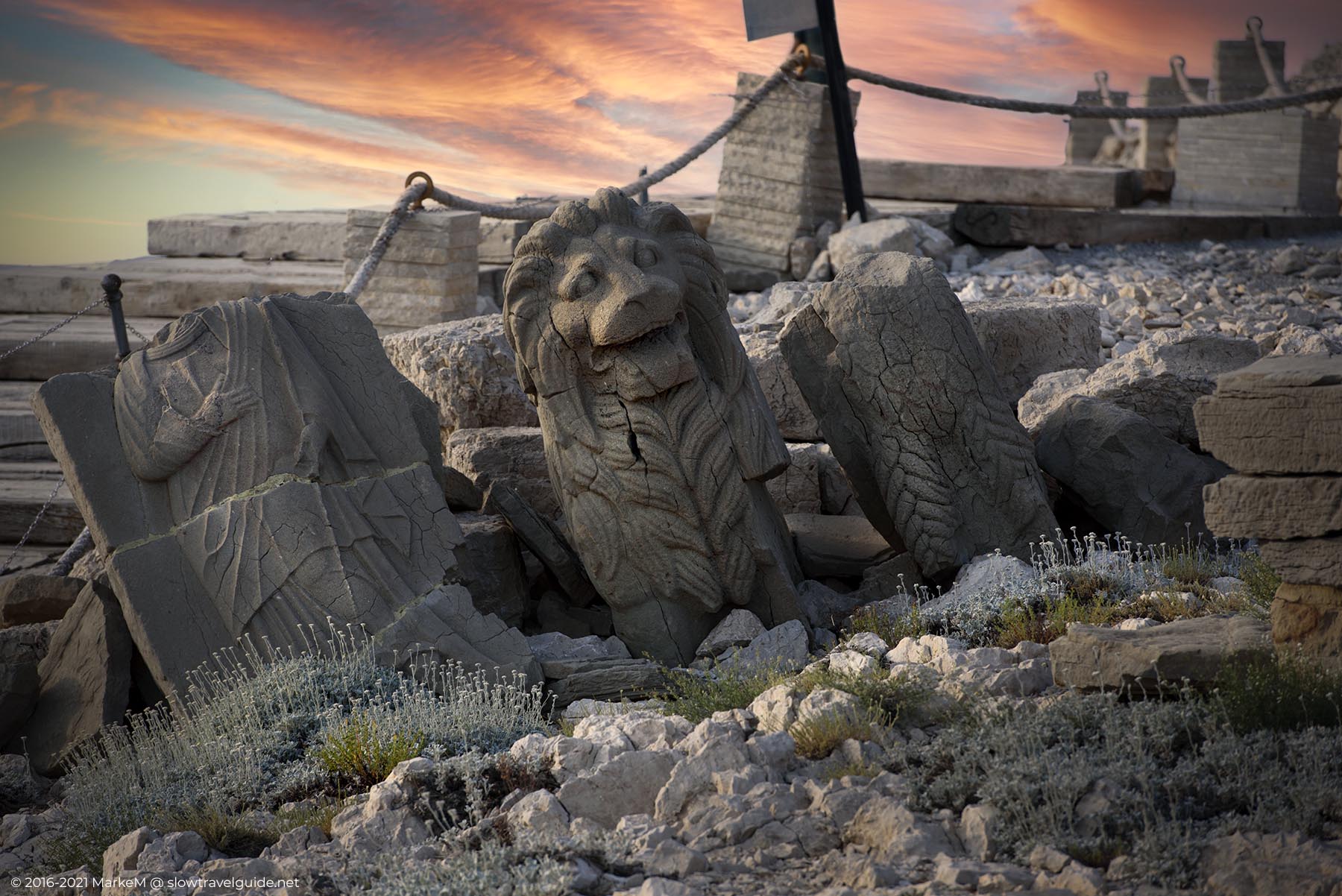
Enjoying The Sunset on West Terrace
If you have any questions about a place, feel free to ask. You can send us a message through our contact page, or leave a comment on our instagram or facebook pages.
You can also join to our group Turkey Travel Photography on facebook to share your lovely photos or experiences about Turkey.
As you can see in the photos, depending on the timing of your visit, you will or will not be surrounded by fellow enthusiasts visiting Nemrut.
In our case, it was the end of June, visiting Mount Nemrut in the late afternoon. Once we arrived at the summit, we were in the company of more than a hundred people. For such a small area, this means a crowd.
Don’t get us wrong, Nemrut is still one of the fascinating places to see in Turkey, but if you don’t like crowds, plan your visit with care. Try to avoid the high season. Go at sunrise instead of sunset. Sunset is busier.
Practical Information Before Visiting Nemrut
For the exact location in Turkey, see our map below. Once you are in the area, you can get by car to the parking at Nemrut and walk from there to the summit. You can buy a ticket at the Nemrut Center near the parking lot and have a drink or eat something while enjoying the impressive view.
If you don’t want to drive up the mountain yourself, you can use public transport, rent a private minibus or book a tour with a local tour operator, and it will be possible also to visit other exciting places in the neighbourhood.
Bring water and a coat or a blanket, and it can get cold in the morning or the evening on the mountain.
Alternative Road To Nemrut
The Alternative Road From Malatya to Nemrut, a trip that takes almost 2 hours using the mountain road.
If you want to visit other interesting places in the neighbourhood, we recommend you stay in Adiyaman Kahta and go out to Nemrut from here. Thus, you will also visit Arsemeia, Septumus Severus Bridge, Karakuş Tumulus and Yeni Kale. Most of the hotels in the Kahta region also provide guidance and transportation services. If you want to see the sunset, the tour starts at noon. After visiting historical places, you arrive at the mountain Nemrut. Although it is a pleasure to see the sunrise, we went during the sunset.
Places Nearby
Arsameia was the summer capital and administrative centre of the Kingdom of Commagene (15km)
Septumus Severus (Roma) Bridge was built without the use of mortar (20km)
Karakuş Tumulus, memorial tomb belonging to the women of the Kingdom of Commagene (30,6km)
Old Kahta-New Fortress, the castle was built on the rocks which were 350m high (16km)
Places We Recommend
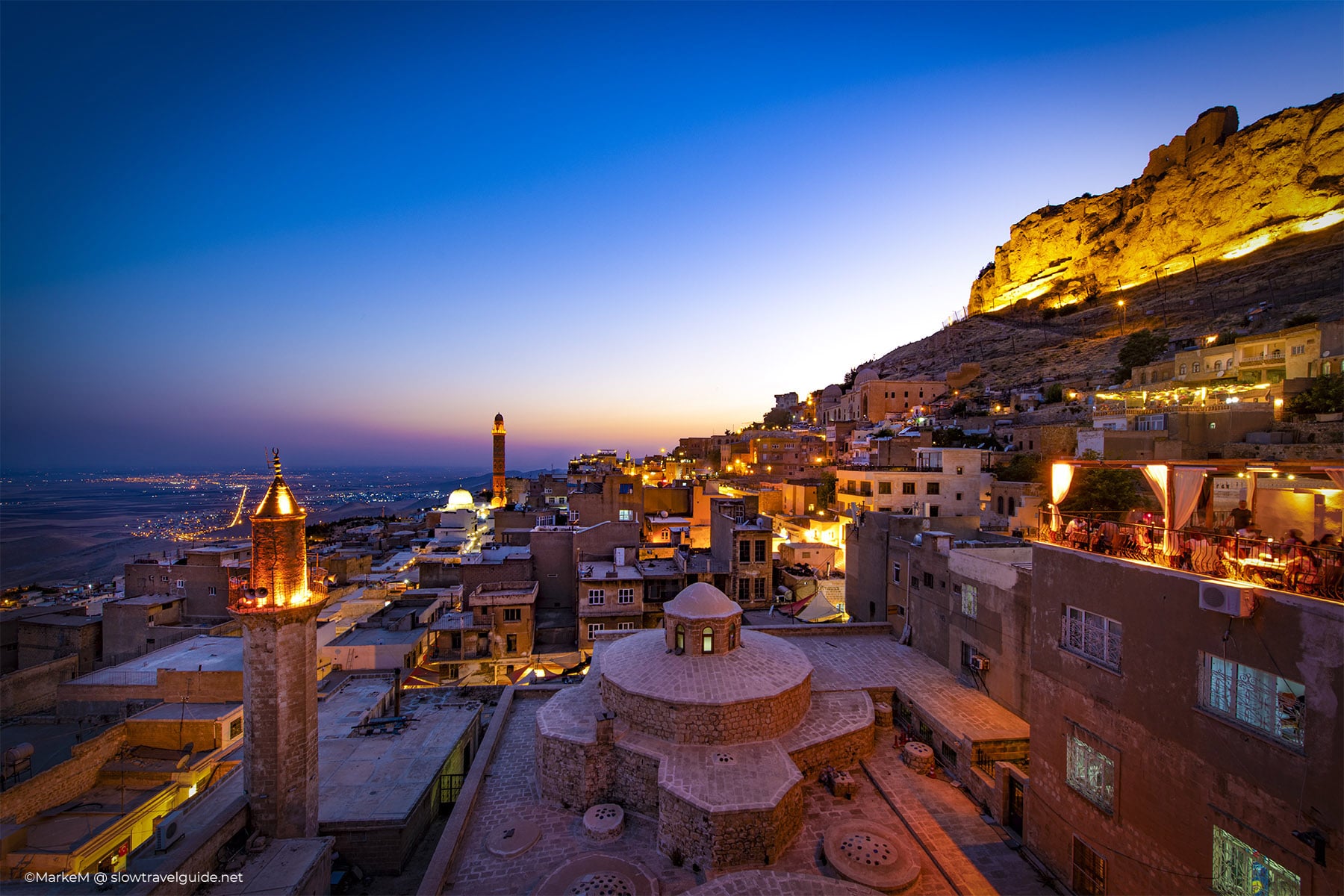
Mardin
It is one of the poetic cities of the Southeast; Mardin gives the visitor the impression that time has stopped here. It has a treasure of architectural, ethnographic, archaeological, historical and visual buildings. (Read more)
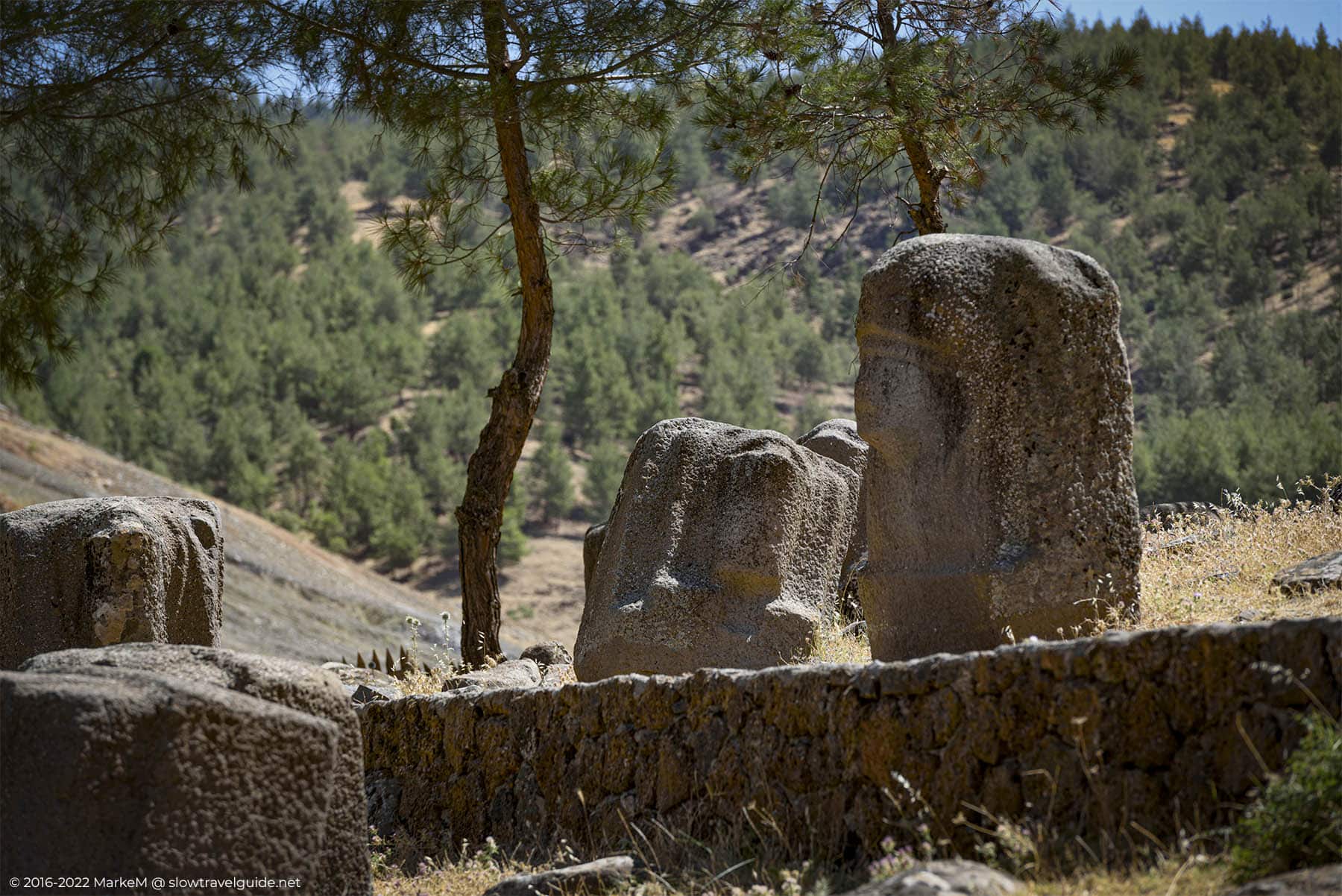
Yasemek Museum
Yasemek Open-air museum, which is on the Unesco World Cultural Heritage Tentative list, was once the largest sculpture producing quarries of the Near East. (Coming soon)
© 2016-2022 All rights reserved by slowtravelguide.net.
The content of this website is copyright protected and the property of slowtravelguide.net.No part of this website may be reproduced in whole or in part in any manner without the written permission of the copyright owner.
Copyright ©2016-2022 Tüm hakları saklıdır. Bu (slowtravelguide.net.) web sitesinin içeriği koruma altındadır ve slowtravelguide.net.Buradaki hiçbir içerik (yazı,fotoğraf,video vb.) izinsiz olarak kopyalanamaz, alıntı yapılamaz,başka yerde yayınlanamaz.
